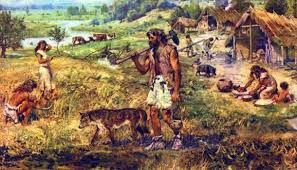Before there was civilization, or even horticulture based societies, most humans survived as nomadic Hunter-Gatherers to feed themselves and their tribes. In Europe their is considerably less dense with trees than in North America or Asia, luckily Climatologist Jed Kaplan from the University of Lausanne and Archaeologist Jan Kolen of Leiden University their research and findings might explain why this is the case.
Hypothesis:
The hypothesis, which is formed from previous evidence and research, is that the forest of Europe where much more densely populated at one time. However at the end of the last great Ice-Age some 20,000 years ago Hunter-Gatherer tribes of Europe began setting controlled fires for a multitude of reasons but mainly to create grasslands to open up their hunting grounds and make it easier for gathering foods. Also this opened ground and great fires attracted animals to the area allowing for greater intake of raw resources and foods. Thirdly it also facilitated movement, by allowing the Hunter-Gatherers to know which locations had already been used as previous hunting grounds as not to pick the place clean of animals and allow for population increases so they could indeed use it later.
Research:
First the Scientist began with using the layers of ash from multiple dig sites across Europe and noticed that during the time frame they were looking at there was considerable amounts of ash on the ground spread out evenly, more than a simple fire could produce. Next they reconstructed the vegetation based on pollen and plant remains from the lakes and marshlands, this reconstruction suggested that Europe had an open steppe vegetation, but with the input of computer simulations they noticed that under natural conditions without human intervention large areas of Europe should have been far more dense with forest. There is also little evidence that the computer simulations are errant in their simulations.
Secondly in their research they looked at the large-scale impact humans had on the landscape. They began with compiling analyses of both Ice Age accumulations of silt during the time and computer simulations interpreting the new archaeological data. The data, which is quite surprising, shows that Hunter-Gatherers were capable of altering the landscape with the first large scale impact of humans on landscape happening about 20,000 years before the Industrial Revolutions would completely alter the landscapes of Europe really the whole world. Scientist new that during the time of the Ice Age giant animals would also have an impact on the landscape but the idea that humans had a quite a significant impact on the landscape was surprising to say the least.
Conclusions:
From the combination of Hypothesis and Research we see that the researchers were not far off with their guesses, in fact they were pretty much accurate. However the one thing they were off about is, was this deliberate intention by the tribes or was this rather negligent behavior with fires, we know how tough fires can be to handle look at Gatlinburg right now. I would argue that this might be a combination of the two and that while they had intentions of what they wanted to do with the fires, they could have never predicated the large-scale impact they would’ve had on the environment and the landscape itself.
https://www.sciencedaily.com/releases/2016/12/161201092823.htm
http://journals.plos.org/plosone/article?id=10.1371/journal.pone.0166726


